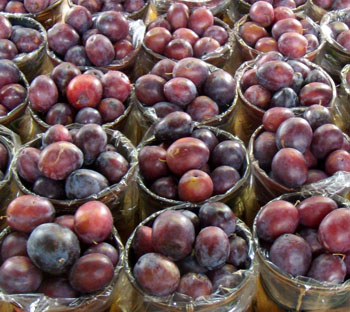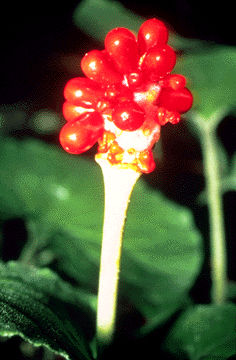Article
Plankton
Plankton [Gk planktos, "drifting"], plants and animals, phytoplankton and zooplankton, respectively, that float freely or drift with currents in oceans, freshwater ponds and lakes.

Enter your search term
Signing up enhances your TCE experience with the ability to save items to your personal reading list, and access the interactive map.
Create AccountArticle
Plankton [Gk planktos, "drifting"], plants and animals, phytoplankton and zooplankton, respectively, that float freely or drift with currents in oceans, freshwater ponds and lakes.
"https://development.thecanadianencyclopedia.ca/images/tce_placeholder.jpg?v=e9dca980c9bdb3aa11e832e7ea94f5d9" // resources/views/front/categories/view.blade.phphttps://development.thecanadianencyclopedia.ca/images/tce_placeholder.jpg?v=e9dca980c9bdb3aa11e832e7ea94f5d9

Article
The shoot system (stem and leaves) grows upward into the light and is the site of photosynthesis; the root system penetrates the soil, anchors the plant and absorbs necessary water and minerals.
"https://d2ttikhf7xbzbs.cloudfront.net/media/media/8c6d96af-79e3-4fb0-bbea-a540ea72e324.jpg" // resources/views/front/categories/view.blade.phphttps://d2ttikhf7xbzbs.cloudfront.net/media/media/8c6d96af-79e3-4fb0-bbea-a540ea72e324.jpg

Article
Plant breeding is an applied science, in which knowledge of genetics, pathology, plant physiology, statistics, and molecular biology are used to modify plant species for human needs or preferences.
"https://development.thecanadianencyclopedia.ca/images/tce_placeholder.jpg?v=e9dca980c9bdb3aa11e832e7ea94f5d9" // resources/views/front/categories/view.blade.phphttps://development.thecanadianencyclopedia.ca/images/tce_placeholder.jpg?v=e9dca980c9bdb3aa11e832e7ea94f5d9

Article
Popular classification usually divides living beings into plants and animals and, sometimes, microbes. Scientific classification long followed a similar system, with 2 principal kingdoms: the animal order and the vegetable order.
"https://d2ttikhf7xbzbs.cloudfront.net/media/media/edce9657-3d08-4b7c-b369-aa52cc7f8d79.jpg" // resources/views/front/categories/view.blade.phphttps://d2ttikhf7xbzbs.cloudfront.net/media/media/edce9657-3d08-4b7c-b369-aa52cc7f8d79.jpg

Article
Plant disease can decrease the economic, aesthetic and biological value of all kinds of plants. Plant pathology (phytopathology) is the study of the nature, causes, prevention and socioeconomic aspects of plant diseases.
"https://development.thecanadianencyclopedia.ca/images/tce_placeholder.jpg?v=e9dca980c9bdb3aa11e832e7ea94f5d9" // resources/views/front/categories/view.blade.phphttps://development.thecanadianencyclopedia.ca/images/tce_placeholder.jpg?v=e9dca980c9bdb3aa11e832e7ea94f5d9

Article
Indigenous peoples in what is now Canada collectively used over a 1,000 different plants for food, medicine, materials, and in cultural rituals and mythology. Many of these species, ranging from algae to conifers and flowering plants, remain important to Indigenous communities today. This knowledge of plants and their uses has allowed Indigenous peoples to thrive in Canada’s diverse environments. Many traditional uses of plants have evolved to be used in modern life by Indigenous and non-Indigenous peoples alike. (See also Indigenous Peoples’ Medicine in Canada.)
"https://d2ttikhf7xbzbs.cloudfront.net/media/new_article_images/WildBerries/9342749963_6006fba520_z.jpg" // resources/views/front/categories/view.blade.phphttps://d2ttikhf7xbzbs.cloudfront.net/media/new_article_images/WildBerries/9342749963_6006fba520_z.jpg

Article
Plate tectonics is the theory proposing that Earth’s outer rocky shell is divided into seven major and several smaller rigid plates. Forces generated by heat losses from the planet’s interior constantly move the plates about. Plate movements, ongoing over millions of years (see Geological History), open and close ocean basins, generate volcanoes, raise mountains, facilitate accumulation of mineral and petroleum deposits, and influence evolution and climate change. Friction between plates prevents steady motion and stores energy that is released in sudden movements, causing earthquakes. This article is the full-length entry about plate tectonics. For a plain-language summary, please see Plate Tectonics (Plain-Language Summary).
"https://d2ttikhf7xbzbs.cloudfront.net/media/new_article_images/PlateTectonics/PlateTectonicsMapEN.png" // resources/views/front/categories/view.blade.phphttps://d2ttikhf7xbzbs.cloudfront.net/media/new_article_images/PlateTectonics/PlateTectonicsMapEN.png

Article
Plate tectonics is the theory that rocky plates divide Earth’s surface. The plates move as Earth releases heat from its interior. The movement of plates creates volcanoes and mountains and causes earthquakes. This article is a plain-language summary of Plate Tectonics. If you are interested in reading about this topic in more depth, please see our full-length entry, Plate Tectonics.
"https://d2ttikhf7xbzbs.cloudfront.net/media/new_article_images/PlateTectonics/PlateTectonicsMapEN.png" // resources/views/front/categories/view.blade.phphttps://d2ttikhf7xbzbs.cloudfront.net/media/new_article_images/PlateTectonics/PlateTectonicsMapEN.png

Article
Platinum (Pt) is the best known of the 6 greyish-white, metallic, platinum group elements, which also include palladium (Pd), iridium (Ir), rhodium (Rh), osmium (Os) and ruthenium (Ru). Platinum and palladium are more commonly used than the other elements in the group.
"https://development.thecanadianencyclopedia.ca/images/tce_placeholder.jpg?v=e9dca980c9bdb3aa11e832e7ea94f5d9" // resources/views/front/categories/view.blade.phphttps://development.thecanadianencyclopedia.ca/images/tce_placeholder.jpg?v=e9dca980c9bdb3aa11e832e7ea94f5d9

Article
Plover is the common name for a family (Charadriidae) of shorebirds with 2 subfamilies: Charadriinae, including true plovers; and Vanellinae, including lapwings.
"https://d2ttikhf7xbzbs.cloudfront.net/media/media/54ed14de-ebc8-46ba-80f7-c4f5bbef4130.jpg" // resources/views/front/categories/view.blade.phphttps://d2ttikhf7xbzbs.cloudfront.net/media/media/54ed14de-ebc8-46ba-80f7-c4f5bbef4130.jpg

Article
Plum is a common name for certain members of genus Prunus of the rose family, which produce a smooth-skinned, elliptical, heart-shaped, oblong, ovate or round fruit with a flat seed.
"https://d2ttikhf7xbzbs.cloudfront.net/media/media/a7b2bcfe-316e-4c50-b69e-69d4fc395472.jpg" // resources/views/front/categories/view.blade.phphttps://d2ttikhf7xbzbs.cloudfront.net/media/media/a7b2bcfe-316e-4c50-b69e-69d4fc395472.jpg

Article
Pocket Gopher (Geomyidae), family of medium-sized, solitary, nonhibernating, subterranean rodents.
"https://d2ttikhf7xbzbs.cloudfront.net/media/media/369f05da-3657-43ac-8d8f-51afdcb5fc9d.jpg" // resources/views/front/categories/view.blade.phphttps://d2ttikhf7xbzbs.cloudfront.net/media/media/369f05da-3657-43ac-8d8f-51afdcb5fc9d.jpg

"https://d2ttikhf7xbzbs.cloudfront.net/media/media/bb3cae34-7af8-4118-acfb-e7bdd5f3128f.jpg" // resources/views/front/categories/view.blade.phphttps://d2ttikhf7xbzbs.cloudfront.net/media/media/bb3cae34-7af8-4118-acfb-e7bdd5f3128f.jpg

Article
Poison ivy plants can spread by underground stems or seeds. Most are small shrubs (0.5-1 m tall); others are vinelike plants, 15 m or longer, supported by aerial roots. Shrubby forms are sometimes called poison oak.
"https://development.thecanadianencyclopedia.ca/images/tce_placeholder.jpg?v=e9dca980c9bdb3aa11e832e7ea94f5d9" // resources/views/front/categories/view.blade.phphttps://development.thecanadianencyclopedia.ca/images/tce_placeholder.jpg?v=e9dca980c9bdb3aa11e832e7ea94f5d9

Article
Toxic PropertiesToxic reactions generally are caused by chemical compounds that are produced by plants or absorbed from soil. These compounds produce undesirable physiological responses in individuals or animals.
"https://d2ttikhf7xbzbs.cloudfront.net/media/media/3118a894-b3ac-4aea-92be-4e8966b78166.jpg" // resources/views/front/categories/view.blade.phphttps://d2ttikhf7xbzbs.cloudfront.net/media/media/3118a894-b3ac-4aea-92be-4e8966b78166.jpg
